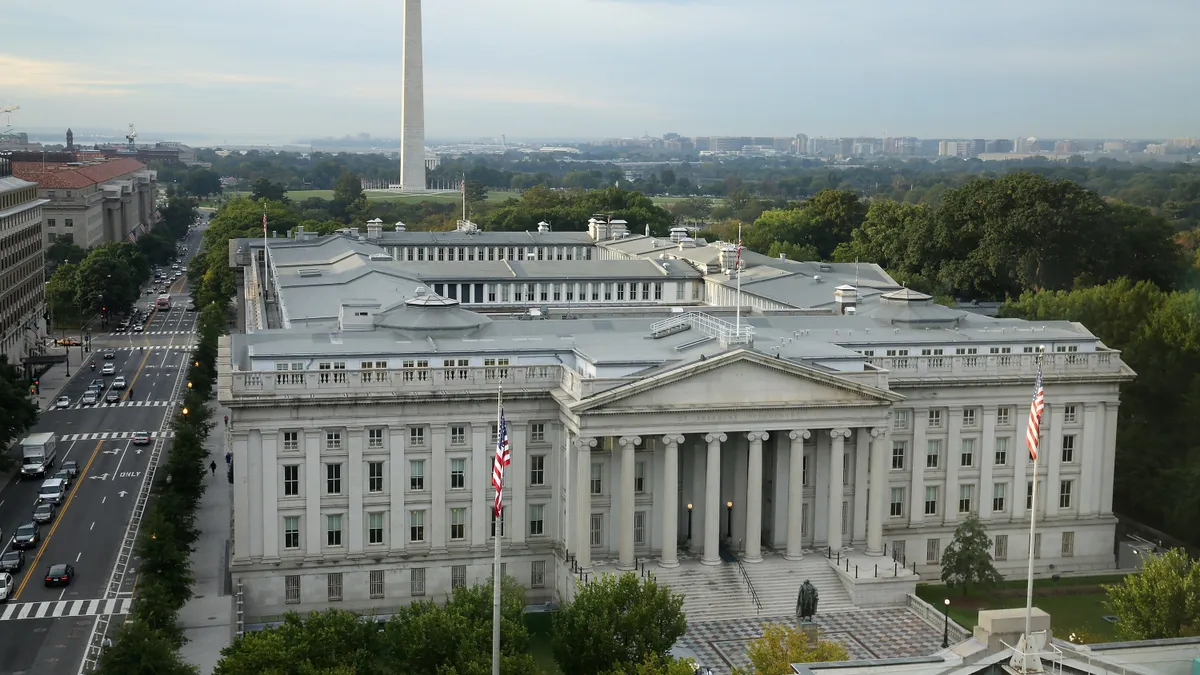Dive Brief:
- Despite opposition and new federal guidance, the Alabama Department of Corrections (ADOC) is proceeding with plans to construct new prisons at the cost of $1.3 billion in part with federal COVID-19 relief funds. A final U.S. Treasury ruling issued Thursday said that American Rescue Plan funds are "generally ineligible" to be used for new prison construction, if they're being built in response to rising crime.
- In a statement emailed to the Associated Press, the deputy director of the Alabama Legislative Services Agency, Kirk Fulford, said that the prison spending is justified under the "lost revenue" provision, which states that the funds can be used to shore up government services.
- Prior to the final ruling, ADOC was proceeding with the construction of two men's prisons using American Rescue Plan funds, after prison construction legislation was signed in October 2021. The two prisons will hold 4,000 people and will be larger than any current prison, according to the Montgomery Advertiser. The legislation also paves the way for a 1,000-inmate women's prison once the men's prisons are 60% complete.
Dive Insight:
The state has been moving forward with the project since October, when Alabama Gov. Kay Ivey signed a bill into law allocating $1.3 billion towards building the new prisons, of which $400 million is coming from federal relief funds. The prisons, located in Alabama's Elmore and Escambia counties, are in the selection process for contractors. The state chose Montgomery, Alabama-based contractor Goodwyn Mills Cawood to design the prison in Elmore County, and Mobile, Alabama-based contractor Thompson Engineering to design the prison in Escambia County.
Once the designs for the prisons are complete, likely in early 2022, ADOC will put out a bid for contractors to complete sitework and other related work to prepare the sites for construction.
Fulford told the AP that Alabama lost an estimated $536.7 million through the pandemic, and that the $400 million that the state plans to use on the prison construction comes from that lost revenue provision, which was placed in a separate fund. Fulford also told the AP that federal rules stated that the funds could be used to pay for government services in an amount equal to the revenue loss experienced by the state due to the pandemic emergency.
However, critics disagree with the assertion by Ivey, Fulford and others who have said that use of the funds to build prisons is justified.
JaTaune Bosby, the executive director of the ACLU Alabama chapter, said in a statement, "Now, the department has issued their final rules, and as we knew all along, spending COVID-19 relief funds on prison construction is inappropriate, particularly while healthcare workers, teachers, small business owners and so many other people in Alabama are struggling during this ongoing pandemic."
Funds and restrictions
According to the Treasury Department rules, government services include any service traditionally provided by the government unless explicitly stated otherwise. Government services also have a streamlined process for reporting and compliance requirements, and are the most flexible eligible use category for funding. These include construction of schools and hospitals, road building and maintenance, health services and more.
In its new ruling, the Treasury Department said that the following capital projects are generally ineligible:
- Construction of new correctional facilities as a response to an increase in rate of crime.
- New congregate facilities to decrease the spread of COVID-19 in the original facility.
- Construction of convention centers, stadiums or other large capital projects intended for general economic development or to aid impacted industries.
As part of the Treasury Department's guidelines, states will have to provide written justification as to why the spending is appropriate for all projects over $10 million in total cost, as well as for some that are under that amount. In the justification, states will need to include:
- A description of the harm or need to be addressed.
- An explanation of why a capital expenditure is appropriate.
- A comparison of the proposed capital project against at least two alternative capital expenditures and a demonstration of why the proposed capital expenditure is superior.















